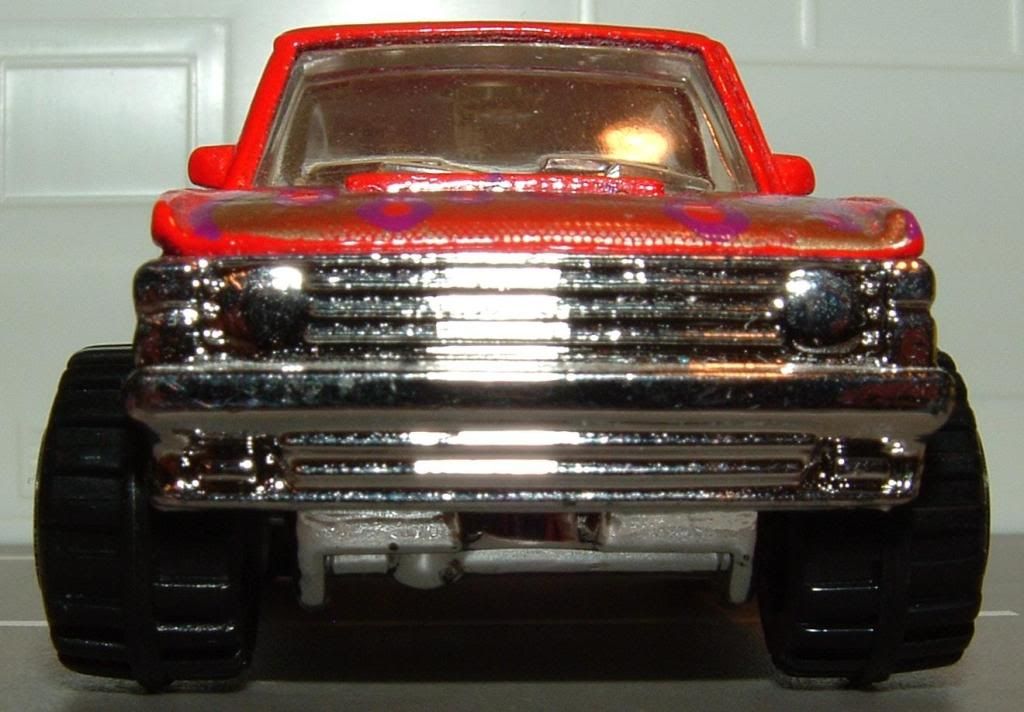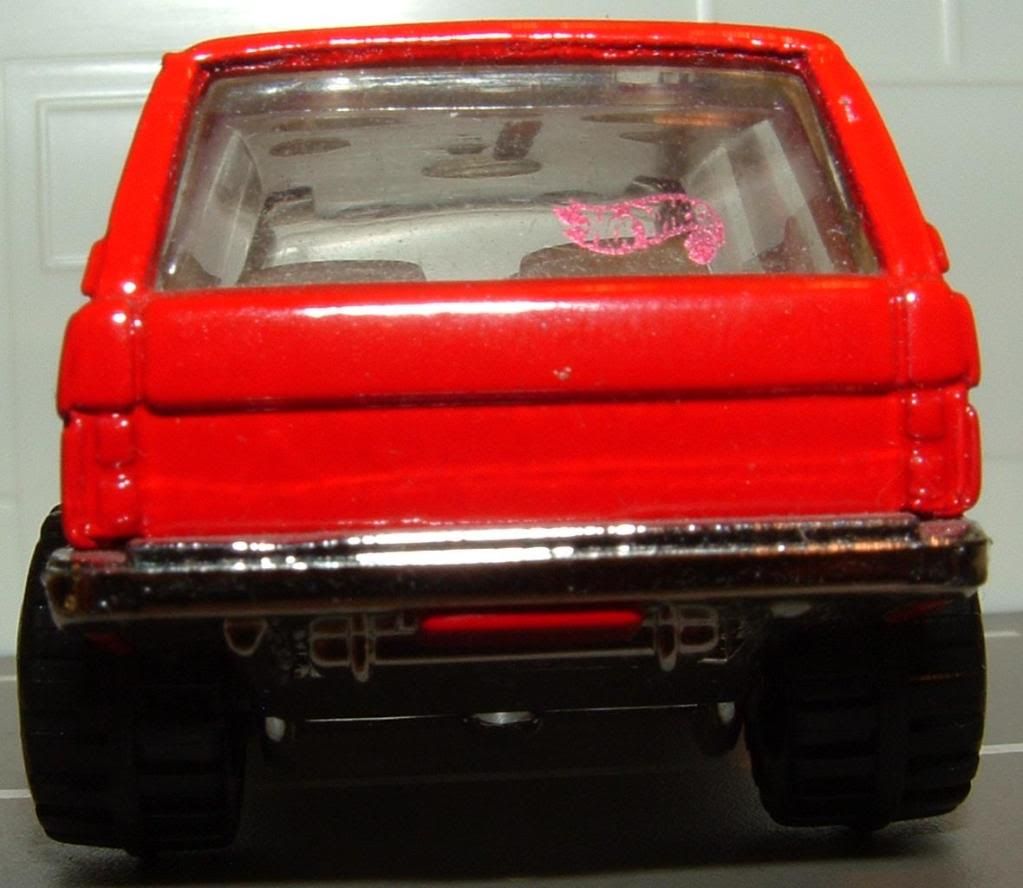
A blog focusing on 1/64 diecast from such popular brands as Hot Wheels, Matchbox, Johnny Lightning, M2 Machines, GreenLight, Tomica, Yat Ming, Majorette, MotorMax, Siku, Corgi, Guisval, Playart, Ertl, Zylmex, Racing Champions, & many more. Swifty's Garage features a daily Car Of The Day and news updates from your favorite brands!
Monday, January 24, 2011
SUV Of The Day: January 24, 2011
Today's car of the day is Hot Wheels' 1989 Range Rover Classic.
The Range Rover Classic is a 4x4 luxury SUV series built by British car maker Land Rover from 1970 to 1996. It was the first generation of vehicles produced under the Range Rover name. For most of its history, it was known simply as the "Range Rover"; Land Rover coined the term "Range Rover Classic" for the brief period the model was built alongside its P38A successor, and applied the name retrospectively to all first-generation Range Rovers.
For more information and pictures of the real car please visit: Range Rover Classic
Early luxury SUVs had long lifespans. This Range Rover and the Jeep Wagoneer being the two standout examples. Both lasted well over twenty years with minimal changes, and provided nice profits to their respective manufacturers.
Although only intended to be a post-war stopgap, the Rover Company's Land Rover 4x4 launched in 1948 proved to a be a worldwide success; within two years it was vastly outselling the company's usual product of semi-luxury cars. The Land Rover had been designed to be cheap and easy to produce and to suit hard work in tough terrain. It was thus a very simple, basic vehicle with a minimum of concessions to comfort- on early vehicles the canvas hood, passenger seats and even doors were optional extras. From the beginning Rover realised that a market existed for a Land Rover that was off-road capable but more comfortable and civilised. In 1949 it released the Land Rover Station Wagon with a coachbuilt wood-framed body by Tickford. Whilst a big improvement on the standard vehicle (the Tickford had seven seats, floor carpets, a heater, a one-piece windscreen and other car-like features) its hand-built nature kept prices high and fewer than 700 were sold before sales were stopped in 1951.
In 1954 Land Rover launched its second type of Land Rover Station Wagon, this time built by the company itself. The new version was much more successful but was aimed more at the commercial user who needed an off-road people carrier rather than the buyer requiring car like comfort in an off-roader. The Station Wagon was based on the commercial variant of the Land Rover but with seats fitted to the load space and windows cut into the sides. Whilst available with features such as an interior light, heater, door and floor trims and upgraded seats the Station Wagon retained the base vehicles tough and capable but firm suspension as well as its mediocre road performance.
By the late 1950s Rover remained convinced that a market existed for a vehicle combining the toughness and ability of the Land Rover with the comfort of a Rover saloon car. In 1958 the first of the 'Road Rover' concepts were built. These were a series of development cars built by the engineering department consisting of Land Rover chassis and running gear clothed in a functional but car-like estate car body. The Road Rover was aimed at markets such as Africa and Australia where ordinary motorists faced long journeys on unmade roads where a vehicle with four-wheel drive and tough suspension was a benefit.
By the 1960s Rover was becoming aware of the development of the Sports Utility Vehicle in North America. SUVs such as the International Harvester Scout and the Ford Bronco offered a different blend of off- and on-road ability to existing utility 4x4s such as the Land Rover and the Jeep, proving capable of good on-road comfort and speed whilst retaining more than adequate off-road ability for most private users. The Jeep Wagoneer proved the concept further. The final element of what would become the Range Rover concept was provided by the President of Rover's USA operations who, frustrated by the lack of suitable vehicles from Britain to compete with the new crop of SUVs sent Rover a Land Rover Series II 88 fitted with a Buick V8 which offered far greater on-road performance and refinement than any Land Rover currently in production.
Rover acknowledged the emergence of this new market for recreational off-roaders and in 1967 began the '100-inch Station Wagon' programme to develop a radical car to compete, with Charles Spencer King in charge. King quickly defined the basic layout of the new vehicle, realising that only long-travel coil springs could provide the required blend of luxury car comfort and Land Rover-like off-road ability (King is said to have been convinced by coil springs when driving a Rover P6 across rough scrubland on part of the Solihull factory site that was being redeveloped, but Rover also bought a Ford Bronco which featured such a suspension system in the early stages of the 100"SW programme). Spencer King was also convinced that a permanent four wheel drive transmission was needed to provide both adequate handling and to reliably absorb the power that would be required by the vehicle if it was to be competitive. This required a totally new transmission unit to be developed but Rover spread development costs between the 100"SW project and that working on what would become the Land Rover 101 Forward Control. The adoption by Rover of the Buick alloy V8 engine had provided the perfect powerplant for the new 4x4, being powerful, light and sturdy. Various modifications were made to the design to suit use in the Range Rover such as fitting different carburretors that maintained fuel supply at extreme angles and making provision for the engine to use a starting handle in emergencies.
The final design, launched in 1970 with bodywork styled largely by the engineering team rather than David Bache's styling division, was marketed as 'A Car For All Reasons'. In its original guise the Range Rover was more capable off-road than the Land Rover but was much more comfortable, offered a top speed in excess of 100 MPH, a towing capacity of 3.5 tons, spacious accommodation for 5 people and groundbreaking features such as an 8-speed permanent four-wheel-drive gearbox and hydraulic disc brakes on all wheels.
Subscribe to:
Post Comments (Atom)






No comments:
Post a Comment